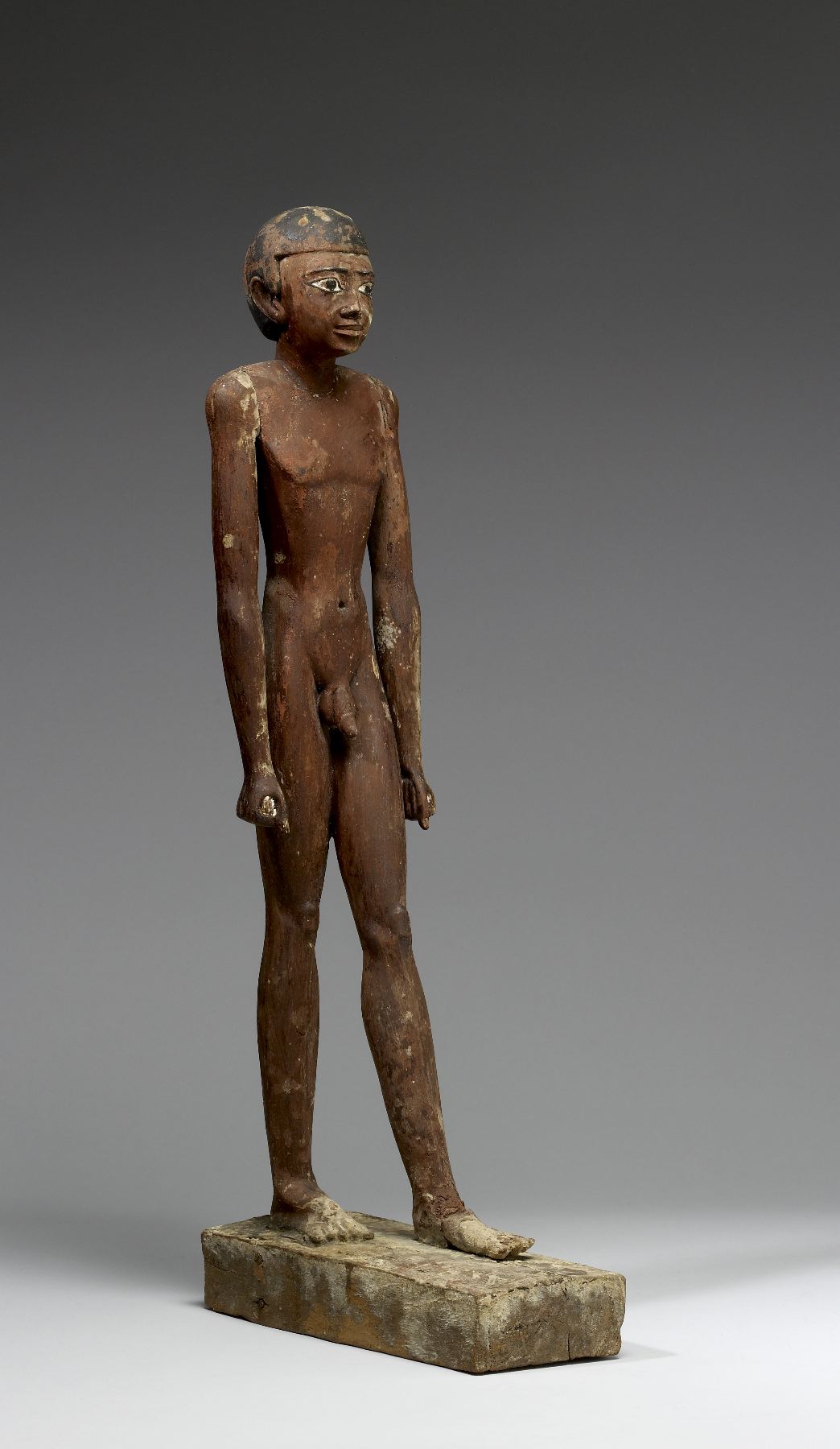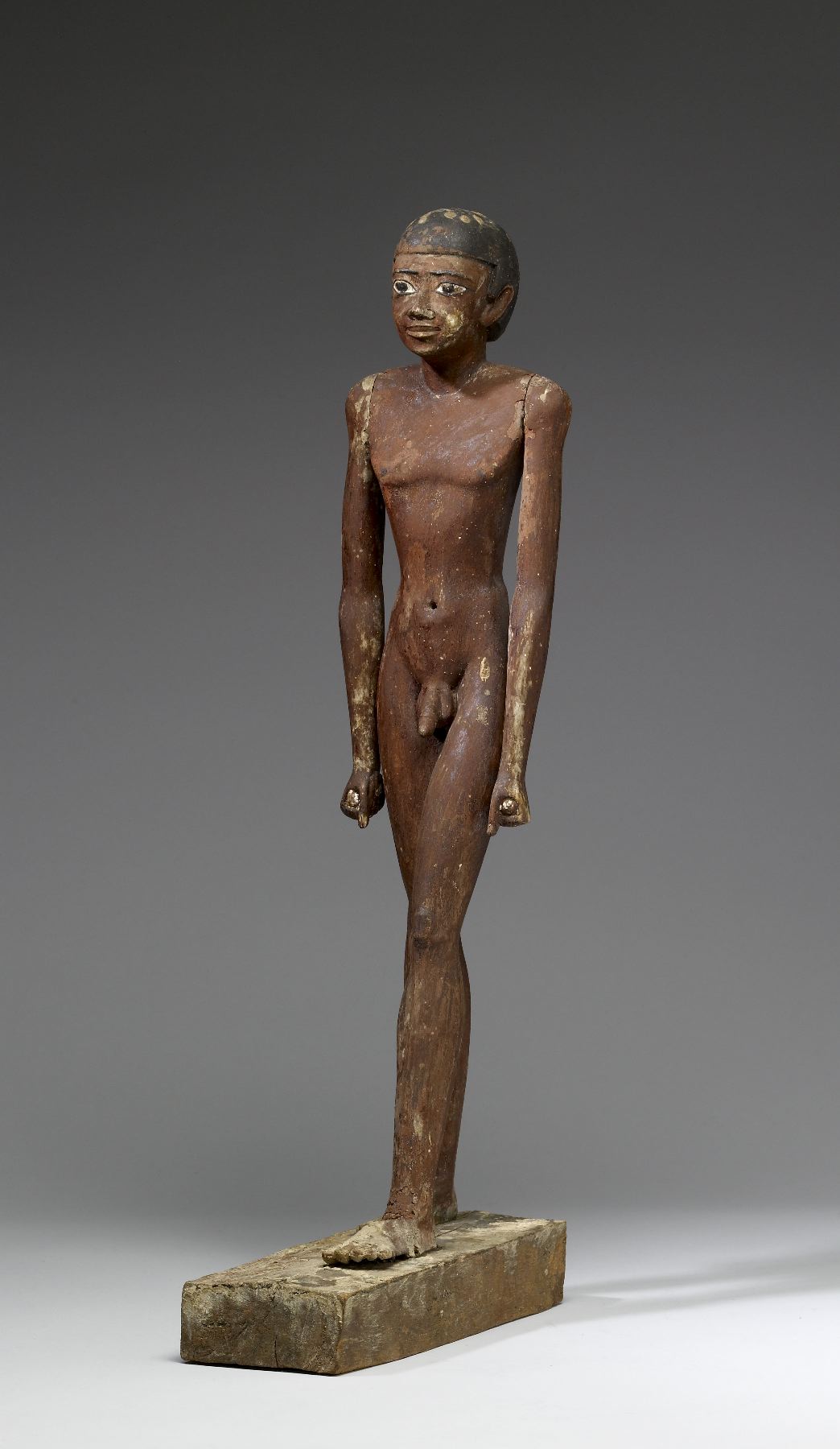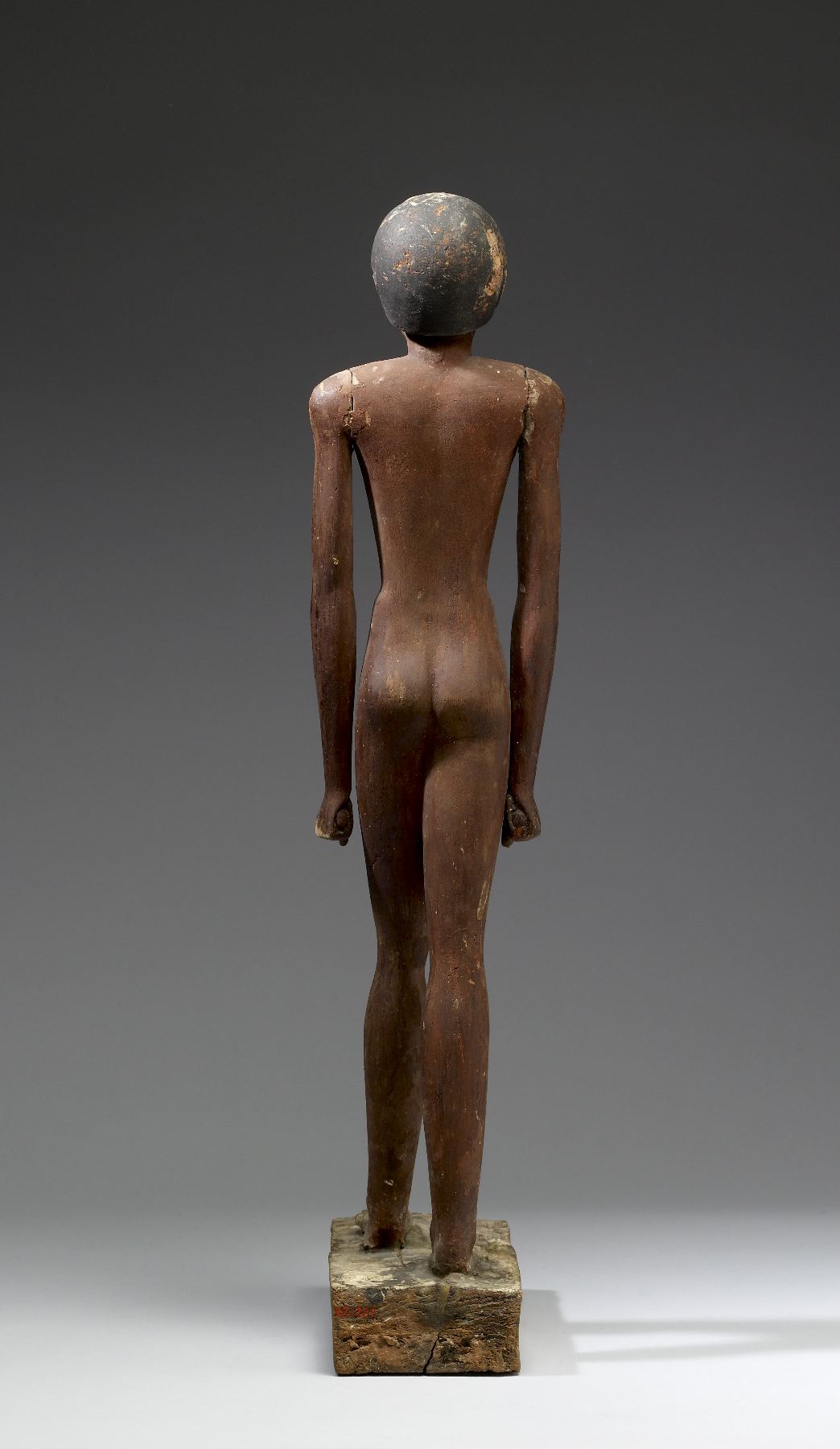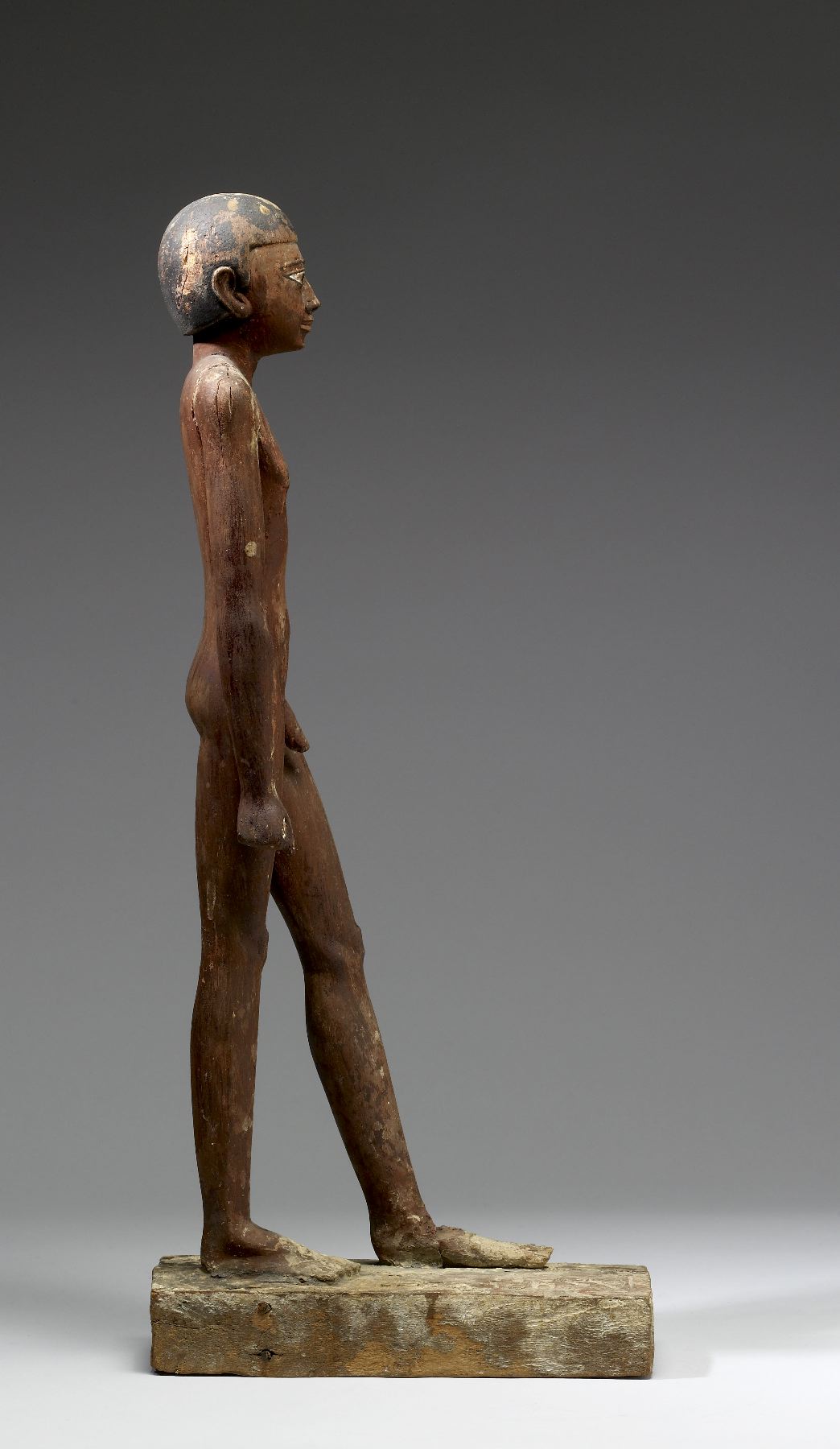Standing Male Figure
(Ancient Egypt and Nubia )
For a short period during the late Old Kingdom and the 1st Intermediate Period, it was popular to show the tomb's owner without clothes. These figures represent the deceased in the phase of renewal in front of the god Osiris, lord of the underworld.
This tomb statue depicts a standing nude male, with his left food advanced. His body is inclined slightly backward, perhaps to give the impression of striding. Both of his arms are at his sides, and both of his hands are closed. This is possibly to indicate that he is holding something, but we cannot discern exactly what it is, as whatever it is does not extend out of his hands on either side. His eyebrows are carved in relief, and there are lines at the corners of his nose. He wears a short haircut, leaving his rather large ears uncovered. He has a very deeply carved belly button, and his toes are carved so as to be completely separated from each other; his fingers are not carved as deeply. The rectangular base that he stands on is original and carries the inscription which reads "the sole companion Ha'a." The body is painted red, the nipples black, the hair black, the eyes black and white, and the base is painted black on the sides and red on its top.
The front of the left foot, the left arm, the right arm, and the body were all made separately, and were attached using dowels, as can be seen in the case of the right leg. The arms are joined at the shoulders. The statue is anchored to the base by means of two wooden dowels, which go through the base and through an invisible prong located under the right foot. In addition to extensive paint loss in numerous places on the surface of this piece, this statue has also suffered structural damage. Cracks exist down the length of the base's top; a crack in the top of the back end of the base is filled in, probably a modern repair. In addition, the top of the left foot, the right shoulder joint, and the back of the right hand are damaged.
Inscription
Provenance
Provenance (from the French provenir, 'to come from/forth') is the chronology of the ownership, custody, or location of a historical object. Learn more about provenance at the Walters.
Dikran Kelekian, New York and Paris [date and mode of acquisition unknown] [as 12th Dynasty, Assiout]; Henry Walters, Baltimore, 1914, by purchase; Walters Art Museum, 1931, by bequest.
Exhibitions
| 2004-2005 | Carved for Immortality. The Walters Art Museum, Baltimore. |
Conservation
| Date | Description | Narrative |
|---|---|---|
| 9/1/1967 | Treatment | repaired |
| 9/16/1998 | Examination | survey |
Geographies
Egypt, Meir (Place of Origin)
Measurements
H: 21 1/4 x W: 4 5/8 x D: 9 1/16 in. (54 x 11.7 x 23 cm); H with base: 20 15/16 in. (53.2 cm)
Credit Line
Acquired by Henry Walters, 1914
Location in Museum
Not on view
Accession Number
In libraries, galleries, museums, and archives, an accession number is a unique identifier assigned to each object in the collection.
In libraries, galleries, museums, and archives, an accession number is a unique identifier assigned to each object in the collection.
22.211












